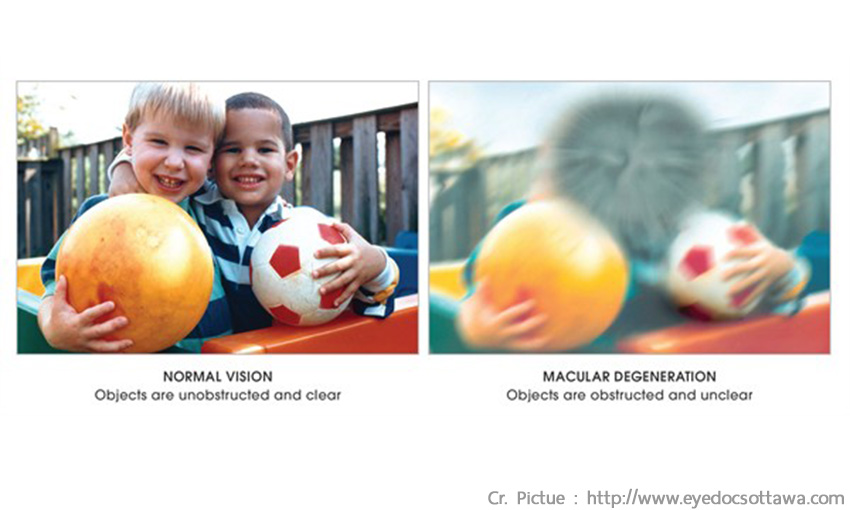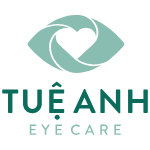AGE-RELATED MACULAR DEGENERATION
Age-related macular degeneration (AMD) is the leading cause of blindness among people over the age of 50 in developed and developing countries.

Age-related macular degeneration (AMD) is the leading cause of blindness among people over the age of 50 in developed and developing countries.
The disease progresses through many stages:
- Age-related macular pathology: is the onset of age-related macular degeneration that appears at the age of about 50. At this stage, the patient usually has no symptoms, only by accident. okay with routine eye exams or exams for other reasons. If you find the disease at this stage, you need to be closely monitored
- Age-old macular degeneration: is a generalized stage of the disease with 2 clinical forms:
- Dry-type: Dry-type macular degeneration of the dry type is more common than the neovascular type, accounting for about 90%. Typically, the appearance of atrophic regions of the retina, these atrophy areas spread continuously over time but at a slow rate. Depending on the location of the retinal atrophy area, the vision decreases more or less, but in the late stage, the eyesight is seriously reduced. Treatment of dry form is mainly diet, lifestyle changes, and medication to slow the progression of the disease, more importantly, periodic monitoring to detect and treat early if neovascularization occurs ( because neovascularization usually appears in an atrophic form at the rate of 10-20% within 5 years).
- The wet form, also known as neovascular type: although this body is less common than the dry form, it causes severe and rapid vision loss in patients with age-old macular degeneration. Because abnormal blood vessels appear in the macula, causing fluid and blood to flow into the retina, causing rapid destruction of macular function. If these abnormal blood vessels are not treated, sooner or later a scar will form in the damaged retinal area and cause permanent vision loss.

So who is at risk for old-age macular degeneration (AMD)?
- Age: the older the age, the higher the risk of getting this disease.
Race: Whites have a higher incidence of AMD than other races.
Genetics: If you have a family member with age-related macular degeneration, especially your parents, your risk of AMD is already higher than those with a normal family history.
- Smoking cigarettes: People who smoke more than 10 packs a year are 1.55 times more likely to get the disease than others.
Diet: A high-fat diet increases the risk of developing AMD. A diet rich in green vegetables and fruits, especially those high in carotene, plays an important role in disease prevention.
Exercise regimen and cardiovascular fitness: Increased BMI and increased blood pressure will increase the risk of AMD.
What are the signs that you might have age-related macular degeneration?
If you are over 50 years old and naturally develop central blurred vision, deformed vision, and color changes, you should promptly consult a specialized ophthalmology facility that specializes in the vitreous - retina. Here, doctors will conduct vision measurements, assess central area lesions using Amsler mesh, fundus exam. In addition, you will need to have a scan of the retina with an OCT scanner and a fluorescent angiogram.
How is age-related macular degeneration treated?
Of all age-related macular degeneration, neovascular senile macular degeneration is the most dangerous because of the risk of rapid and permanent vision loss. Therefore, current studies are focusing the discovery on evaluating the effectiveness of neovascular age-related macular degeneration treatments to find the best method that can maximize vision after treatment. cure and cure.
Currently, the method of injecting drugs that inhibit endothelial proliferation factor (anti-VEGF) is considered to be the most effective method because it acts directly on the cause of the disease (abnormal blood vessels). There are many anti-VEGF drugs such as Avastin, Lucentis, Aflibecet, but to achieve maximum therapeutic effect, patients need to adhere to the full treatment regimen because the drug only lasts for 4 weeks, so the patient needs is repeated once a month until maximum vision is achieved.
What must be done to prevent the progression of senile macular degeneration?
- Get regular eye examinations
- Design a diet rich in vitamins, minerals and omega-3, carotene.
- Quit smoking: It is harmful not only for the eyes but also for the health
- Keep other systemic diseases such as hypertension, blood fat under control
- Exercise regularly and maintain your BMI within the normal range.

